It is spring as I write this, so I’m a bit behind with this blog entry. You may have been wondering about where all those spiders that you saw in the autumn went during the winter. Many of them came to the end of their annual life cycle and died. The species with this lifestyle have already laid their eggs; the future generation will pass the winter in an egg case.
These tiny spiderlings which emerge in the early spring are so small and inconspicuous that we hardly notice them. Other spiders that emerged from eggs laid earlier in the season may survive the winter as immatures or subadults. When they start moving around in the spring they are large enough to be noticeable.
The eggs, early-state spiderlings inside the egg case, emerged young spiders, and sometimes overwintering adult spiders often have cryoprotectant compounds in their cells and hemolymph (blood). These compounds either act like anti-freeze (lower the freezing point), or prevent the formation of large ice crystals that would damage cell membranes.
Some species of spiders may live several years and can survive the winter in a retreat or burrow. Retreats are usually silk cocoons hidden under bark, logs, rocks, or leaf litter. Very often these are near the ground where temperatures are moderate. Even under just a few inches of soil and debris, winter temperatures are much milder than above the surface. If there is a layer of snow on the ground, it can act as additional insulation from cold air. Water and ice are excellent buffers against extreme cold.
A few species can tolerate cold so well that even full-sized adults just find a nook or cranny and freeze in place. When the weather warms, they thaw and emerge.
Perhaps most remarkably, some spiders are “active” during the winter. They may take advantage of a warm winter day to wander over the snow. It isn’t clear what they are doing, but very few prey are active, so they may just be dispersing.
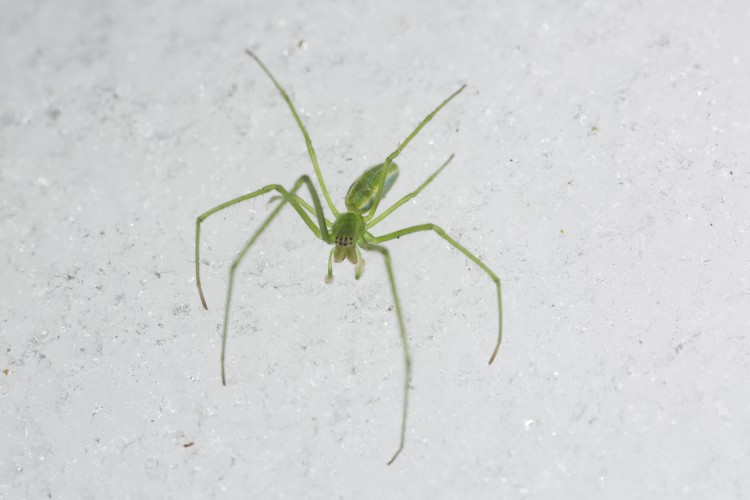
a long-jawed orbweaver (Tetragnatha viridis) subadult male found and photographed by David Hughes at Clear Creek Metropark (Fairfield County, Ohio) in late January 2016
The most famous “winter active” spiders are the tiny denizens of the leaf litter. These animals may even molt into mature adults during the winter months. They take advantage of the relative “warmth” under layers of dead leaves and other debris on the ground. It there is snow cover, so much the better. The epigeal (soil surface) environment is actually quite hospitable to them. In Ohio deciduous forests the leaves that fell during the autumn have been decomposing by the action of fungi and bacteria. Tiny animals that feed on the decomposing leaves, or on the decomposer organisms, become quite abundant by mid-winter. Other small creatures feed on these, including many species of spiders.
Many of these winter spiders are members of the sheetweaver family (Linyphiidae). They come in a variety of sombre browns and blacks, but quite a large proportion have bright orange coloration. I’d love to know why orange is such a common color. Here is a gallery of tiny sheetweavers, none larger than 2.5mm (~1/8 inch) long. These sheetweavers often find mates and reproduce during the winter.
Some of the “larger” sheetweavers of the family Linyphiidae will emerge, build webs, and hunt as soon as the early spring weather permits. Below is an subadult male Neriene variabilis. As an adult he will be only about 4 to 4.5 mm (< 1/4 inch) total body length, but this is still twice as large as the dwarf sheetweaver spiders shown above.
In addition to the sheetweavers, there are a number of other small spiders that are active on the ground surface under leaf litter.
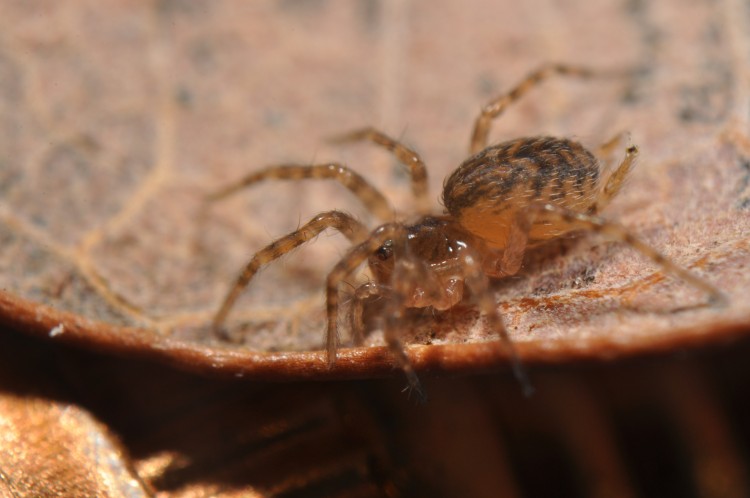
A tiny immature combtailed spider (Family Hahniidae), possibly Neoantistea that I found in leaf litter in the late autumn. It was probably disturbed from a tiny web among the leaves.
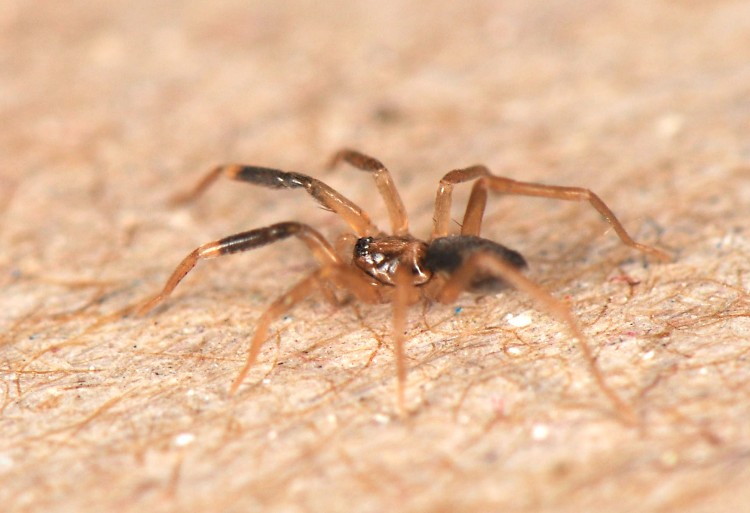
A tiny ground-active spider in the dwarf antmimic family, (Phrurotimpus borealis) immature, found running among the leaves in autumn and winter in Ohio. This may be one of the most common spiders in these situations
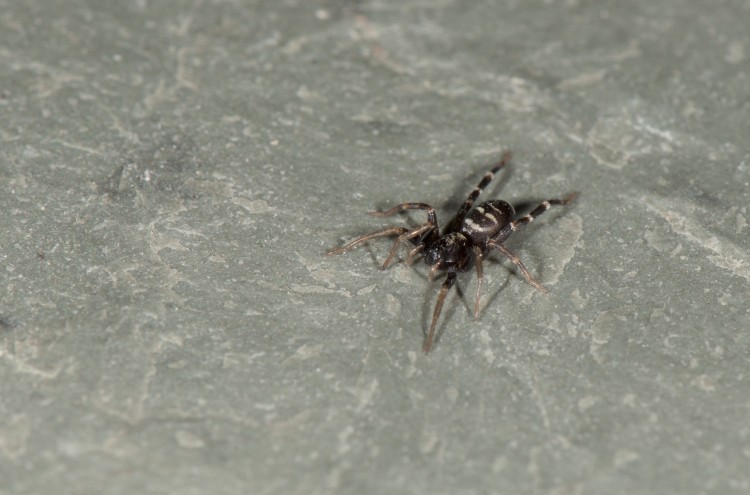
Castianeira probably longipalpa immature posed on a piece of slate for this photo. These spiders have often been found among the leaf litter in Ohio woodlands and forests during winter
One last note about large spiders in winter, sometimes they do come out of hiding. When the weather is unusually nice they may show up right on the surface. Late last year I found the beautiful wolf spider, shown in the photo below, out in the tall grass next to a road while I was out “scouting” for an upcoming Christmas Bird Count. She was presumably hunting. There were other small wolf spiders in the area, great prey for a big one like this.
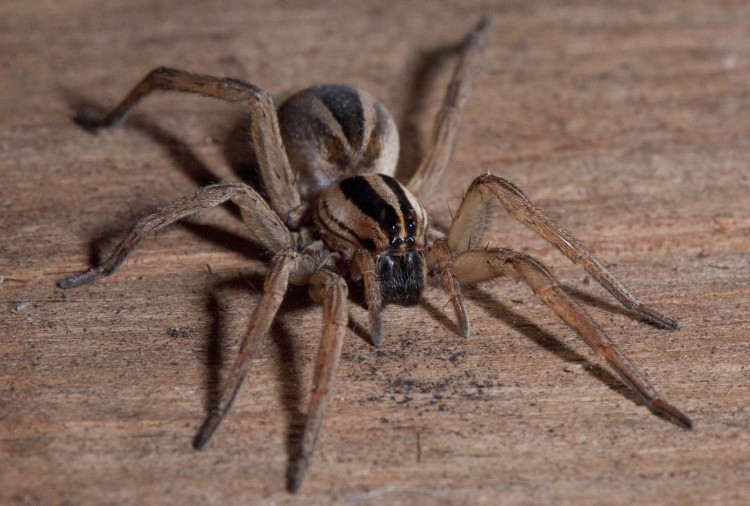
A wolf spider (Rabidosa punctulata) adult Female, this photo is of her “posed” on a piece of wood but she was found out in the grass in early December 2015.

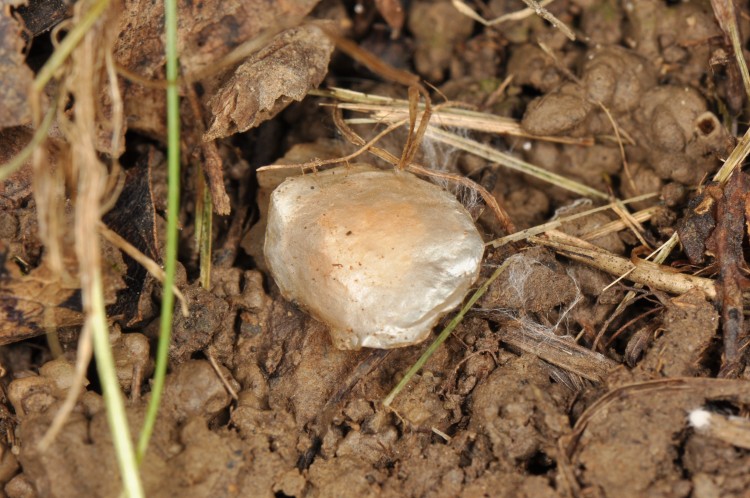
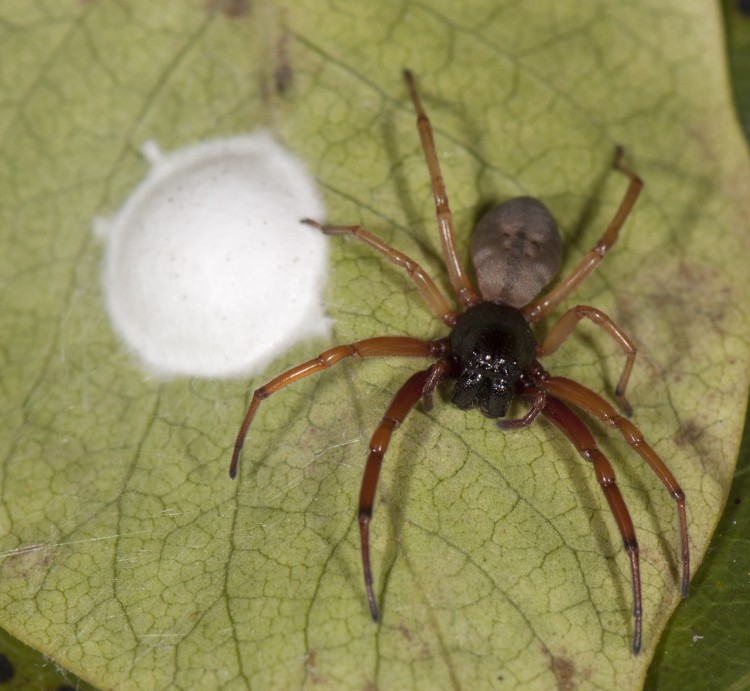
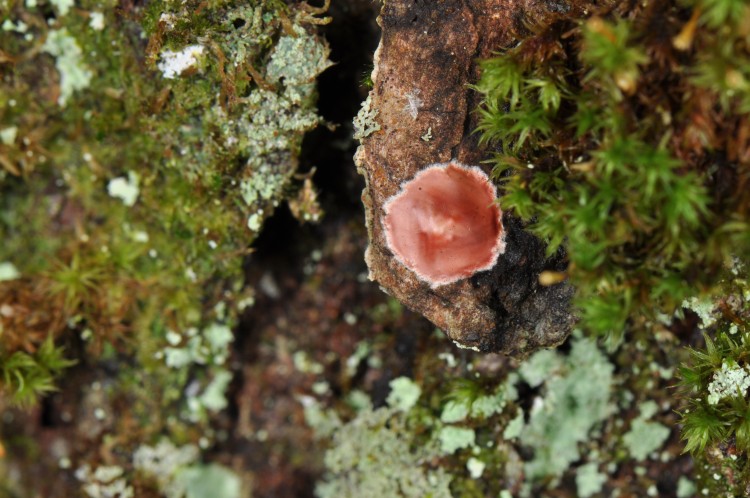
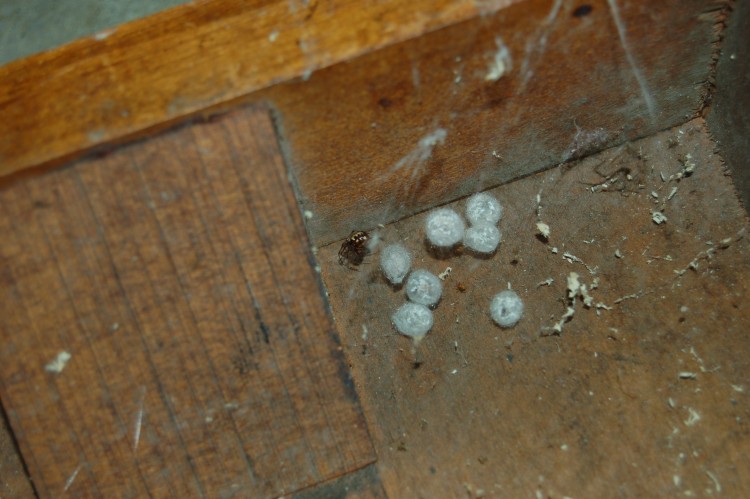
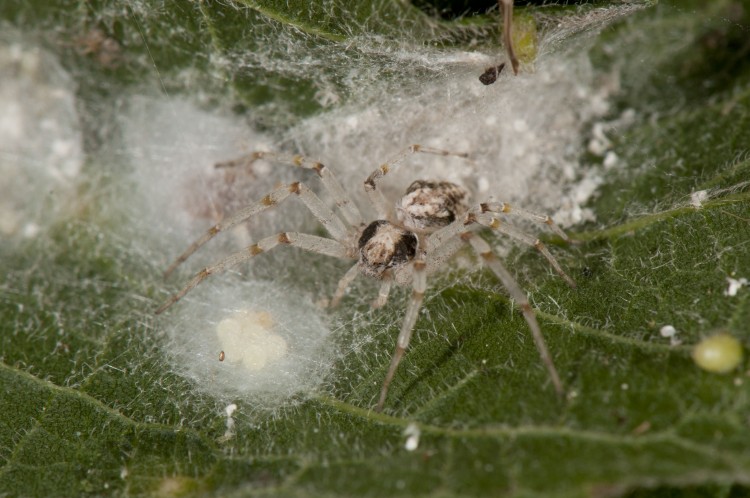
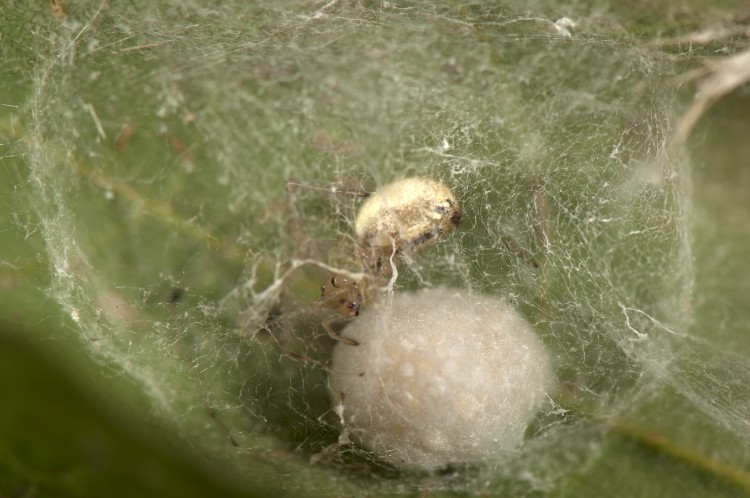

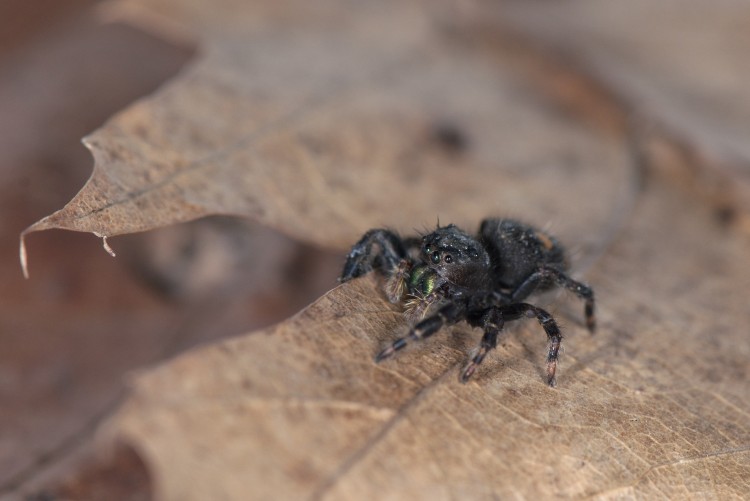
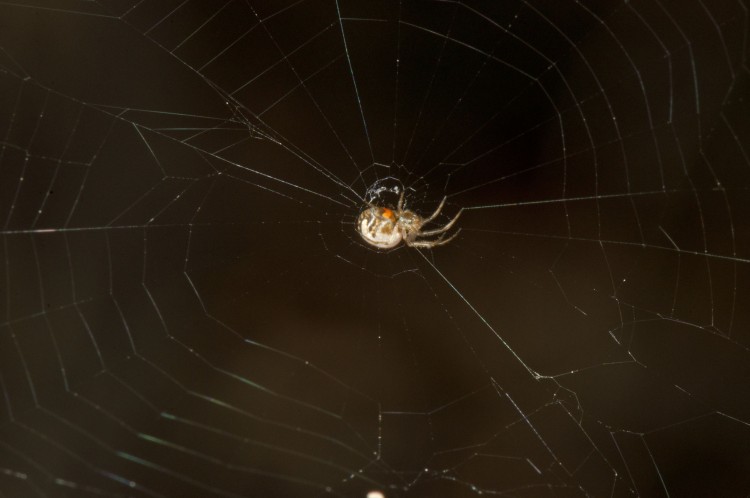
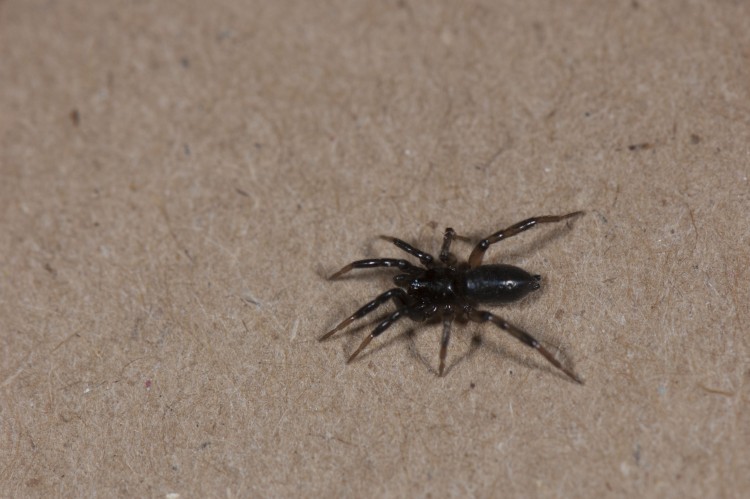
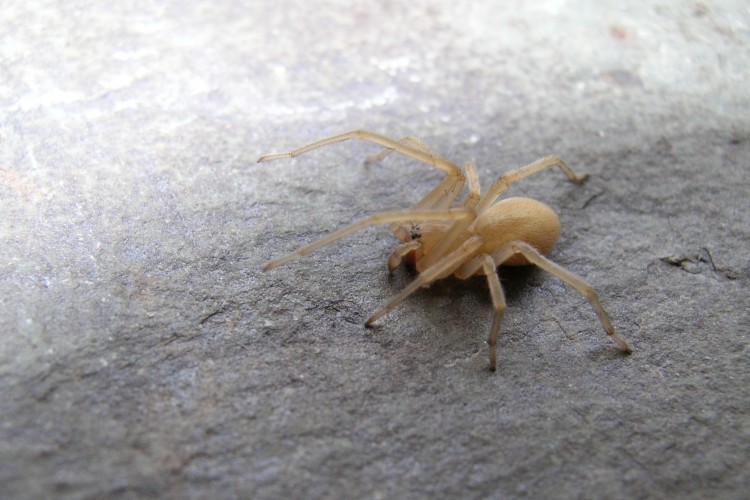
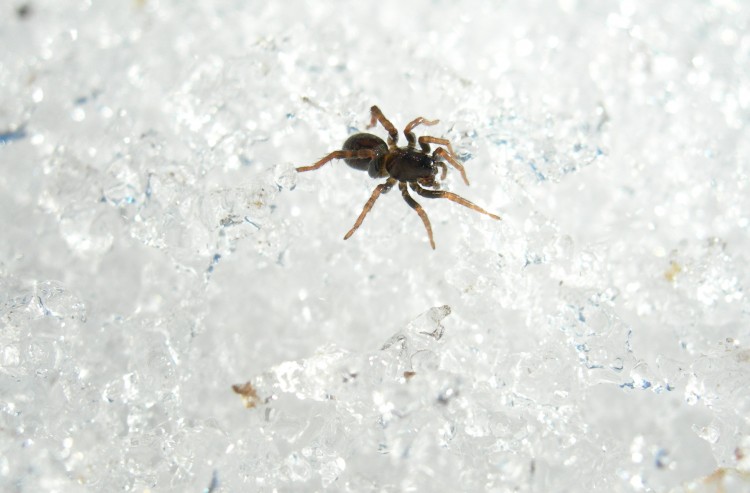
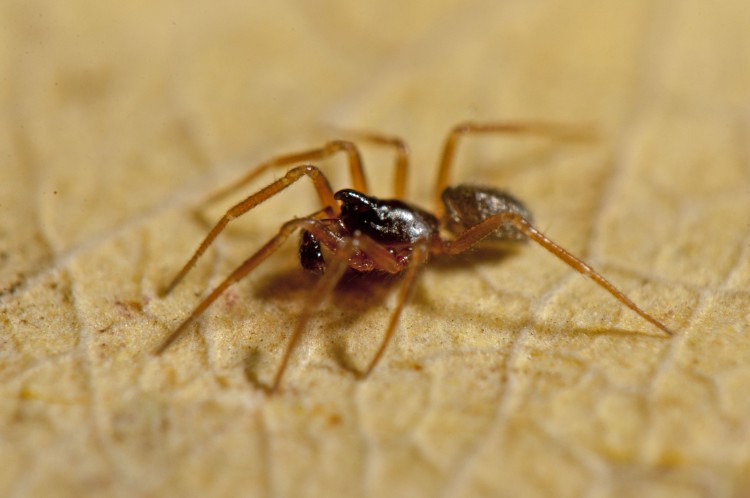
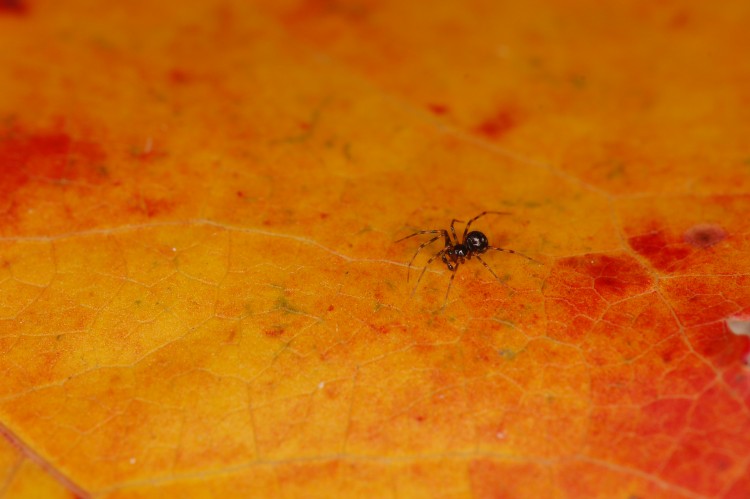
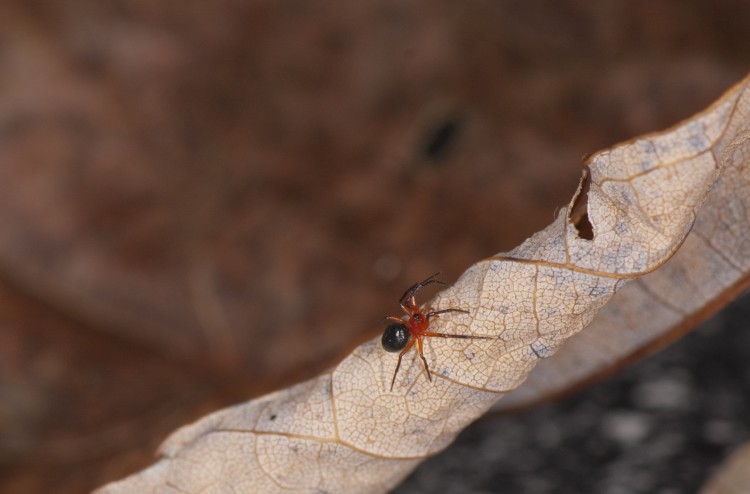
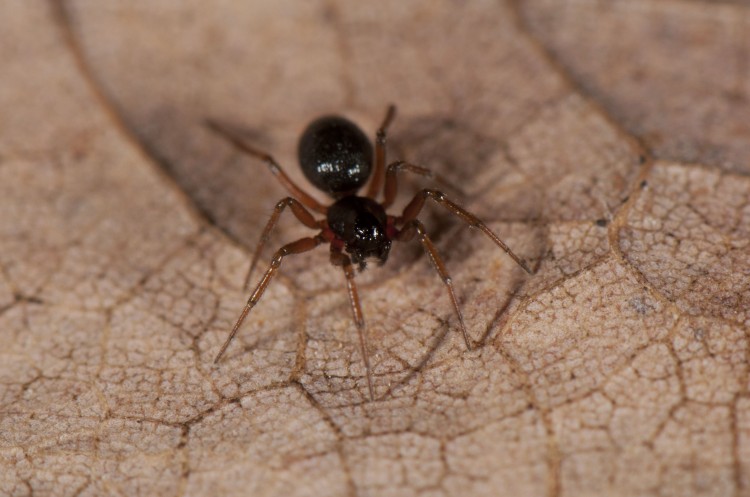
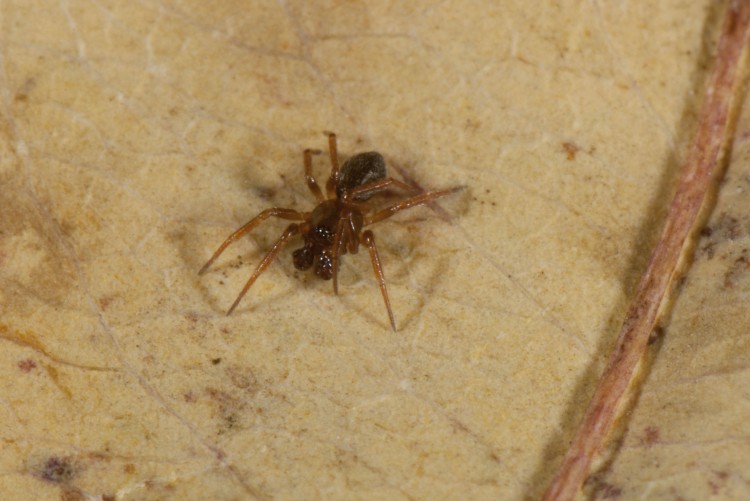
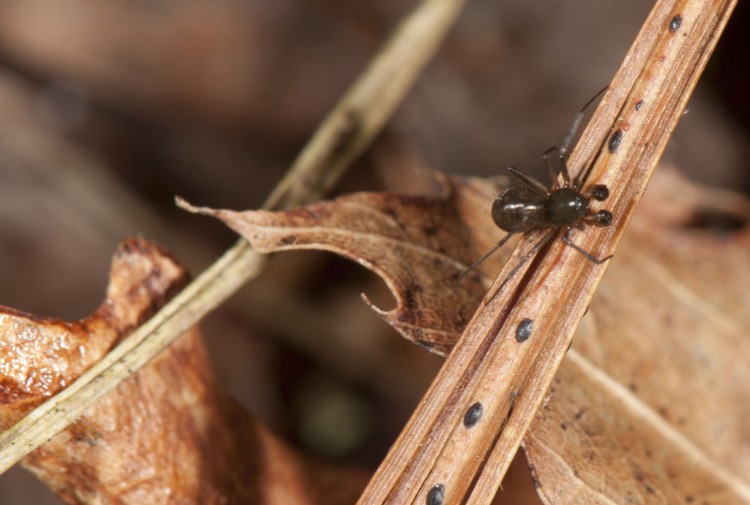
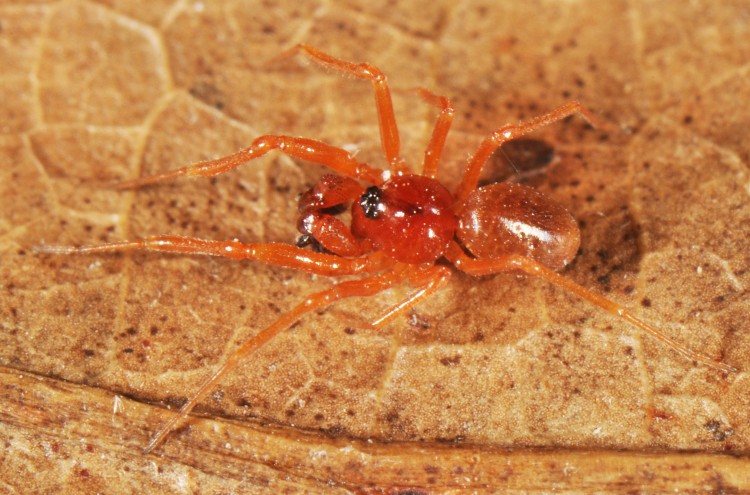
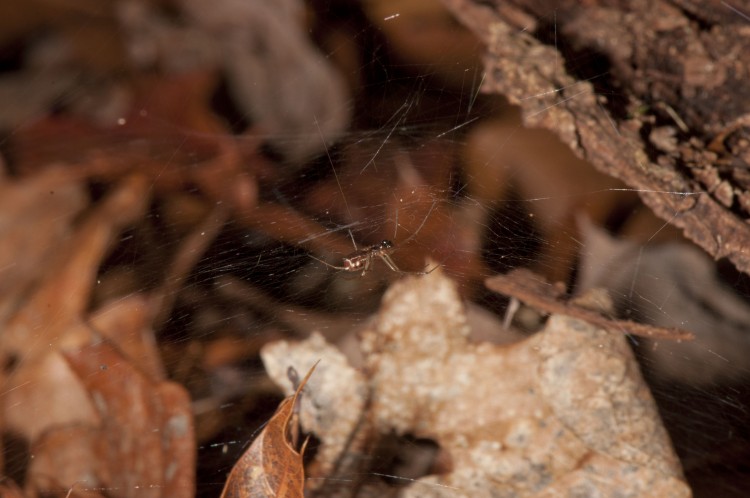
Spiders in snow! Love that green one.
I’m tempted to kill my wolf spider. Two days ago I destroyed the web,but didn’t manage to catch the spider, a few hours later I came out and nearly walked face first into it and its new web on the trellis over the stairs. My neighbor caught it and I took it 500 ft along th path to a fence with trees and grass. Two days later it is back on a new web in the original spot beside the deck stairs. It is beautiful but if it gets on me one of us will die.Probably me, of fright.
Sylvia,
If you live anywhere in the US north of the extreme southern tier of states (Florida to southern California) and you have a spider in a web it is not likely a wolf spider. I’m guessing that it is a “grass spider” in the genus Agelenopsis. They commonly build webs with retreats near houses all over the US. These are harmless spiders, and typically do not leave their web unless disturbed. So if you leave it alone, it shouldn’t be a problem. I’m a bit confused by the “in your face” nature of the web however. Can you send me an email with a photo (at least of the web?). Use bradley.10 AT osu.edu
Is it legal to collect orb weaver spiders in ohio?
Sorry for this late reply. For some reason your comment didn’t show up until recently. Yes, it is perfectly legal to collect any spider in Ohio, assuming you have the permission of the landowner where you intend to do the collecting. I personally, try to minimize collecting where possible. For some species a photograph may be sufficient documentation. But, when the spider is not possible to identify without examination under a microscope, or other similar reasons, it is sometimes necessary.
I found a black jumper spider in my house. I captured it in a glass and took it out and put it in my flower garden. Can it survive during the cold night here in March in Columbus, Ohio?
Linda, your black jumper is likely Phidippus audax, and yes they can survive outdoors in winter here in central Ohio. My rule when moving a spider back outdoors is to wait until the temperature is above freezing, and put them in a place with lots of “cover” of leaves or brush or a wood pile so the spider can select a place hidden from predators, and with an appropriate micro-climate, before the weather turns cold again overnight. As long as there are a couple of hours of moderate temperatures, the spider should be able to find a suitable place. Most Phidippus (in my experience) overwinter as sub-adults. They will begin becoming active hunters as their prey do, and when they have captured enough will molt into an adult, usually in spring. Then it their task is to find a mate!